| Umělec magazine 2001/3 >> Moving Pictures | List of all editions. | ||||||||||||
|
|||||||||||||
Moving PicturesUmělec magazine 2001/301.03.2001 Marisa Příhodová | reviews | en cs |
|||||||||||||
|
Veronika Drahotová, Mind the Heart, Galerie Behémót, Prague, 5. 6. – 4. 7. 2001
Generating the impression of movement is one of the processes peculiar to cinema. Just like the still camera, the movie camera can only take one picture at a time, and the same goes for the projector, which can only show one frame at a time. Film moves intermittently, driven and stopped by the sprockets, which are in turn driven by a crank or motor. A motor and a camera are also the components that drove Veronika Drahotová to create her series of photographs exhibited recently in the exhibition Mind the Heart at Galerie Behémót in Prague. “The motion picture can be thought of as any image that has been given the illusory property of movement.”1 Watching a film involves making connections between fragments or frames to create a holistic impression. In her series of images entitled Veron (Farewell my Concubine), Veronika has created a film-like succession of photographic self-portraits, in which she is the main subject of the viewer’s gaze. Acting within her own mise-en-scene (set in a bedroom) she’s all dressed-up with nowhere to go, pouting and puckering in front of the camera, not so unlike a prostitute before a customer or an actress practicing in front of a mirror. Certain props have deliberately been placed in or out of frame, making reference to the actual film from which she took her title, to emphasize the fantasy of Veronika (or any woman) as the concubine, living an “amoral” life. Overly made-up, posing coquettishly for the camera in her Asian-style dress, there is a sense of fluid movement to her actions. And while the images are not placed in an authentic motion sequence, they stand fragmentally as still frames from a filmic whole. We can envision “Veron” tossing her hair, moving in to a close-up, moving from warm expressions to states of disgust. Her use of the masculine nickname “Veron” again references the original film, causing a break in the viewer’s concupiscent objectification of this woman: she could (assuming the viewer doesn’t actually know the artist) be a man in drag. Veronika’s second series of images, entitled Lenscape (Borderline), lined the opposite wall of Galerie Behémót, almost in mirror-style reflection of the series Veron. Deeply soft-colored images of snow-laden houses on an early winter evening offer touches both of sentimentality and of sordid fantasy. All the images were taken a bit off-center or a little out of frame, and placed side-by-side they quickly become more like a flowing filmstrip than still photography. The discovery, then, that these fragile images were probably taken while passing along the Czech border prevents the viewer from getting lost in the seductive scene. The artist forces us to turn away suddenly, forbidding sweet prolonged imaginings of walking up that snow-covered path, into that warmly lit home, towards whatever awaits us inside. There is a sense of danger among these family-styled houses with their picket fences. The Czech-German border is a place notorious for its thriving prostitution trade. Women stand just off the highway, in front of houses or shops, supposedly offering fantasy for the asking. Veronika’s images offer fantasy too, but not without the sideswipe of reality. There is frustration, pleasure, disappointment, and recurrence all at once in this detached nomadic non-narrative. And there is also a kind of endless rotation, a dizziness, as the viewer passes these private houses, stops at a light and peers inside, but then turns away and moves on, back to the long dark highway. “The retina retains a brief afterimage of each picture still, so that each frame makes a particularly distinct impression.”2 The “persistence of vision” accounts for our not being aware of the darkness between frames, because the retina continues to “see” the image even when the screen has gone dark. Just as when Picasso drew an image in the air using a glowing ember and the image somehow magically remained for a few seconds afterwards, though it had, in fact, already disappeared. While the single gloomy image of the Gothic church found in the Lenscape series is disruptive and becomes something of a moralistic reminder, the actual image itself is so hauntingly beautiful that it also creeps magically back into mind, even though it is no longer actually there. Notes: 1. Bruce F. Kawin, How Movies Work, 1987 pp. 41–42 2. ibid.
01.03.2001
Recommended articles
|
|||||||||||||
|
04.02.2020 10:17
Letošní 50. ročník Art Basel přilákal celkem 93 000 návštěvníků a sběratelů z 80 zemí světa. 290 prémiových galerií představilo umělecká díla od počátku 20. století až po současnost. Hlavní sektor přehlídky, tradičně v prvním patře výstavního prostoru, představil 232 předních galerií z celého světa nabízející umění nejvyšší kvality. Veletrh ukázal vzestupný trend prodeje prostřednictvím galerií jak soukromým sbírkám, tak i institucím. Kromě hlavního veletrhu stály za návštěvu i ty přidružené: Volta, Liste a Photo Basel, k tomu doprovodné programy a výstavy v místních institucích, které kvalitou daleko přesahují hranice města tj. Kunsthalle Basel, Kunstmuseum, Tinguely muzeum nebo Fondation Beyeler.
|

























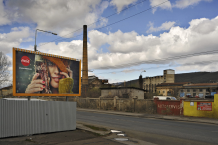




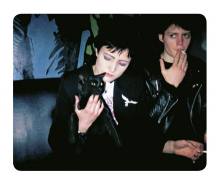
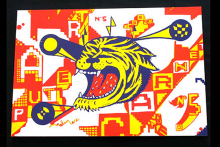
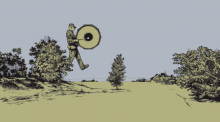
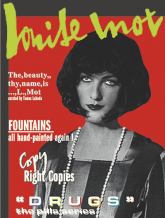


 New book by I.M.Jirous in English at our online bookshop.
New book by I.M.Jirous in English at our online bookshop.
Comments
There are currently no comments.Add new comment